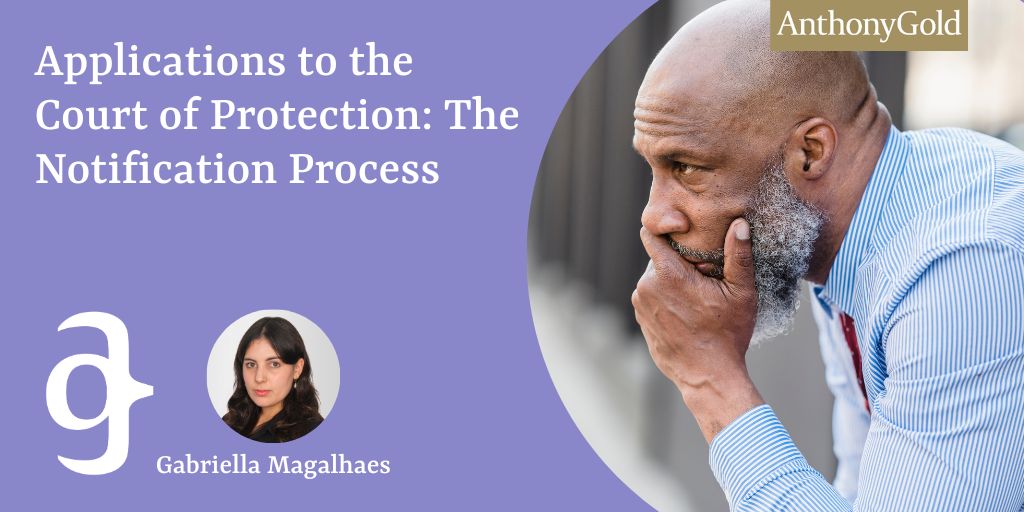Applications to the Court of Protection: The Notification Process

The Court of Protection requires applicants to follow a specific notification process before it will consider an application to appoint a Deputy for a protected party. This applies to applications for both property and affairs, as well as health and welfare matters. Failure to adhere to this process may result in delays or rejection of the application in entirety.
Prior to submitting a Deputyship application, whether online or on paper, the applicant must notify both the protected party and at least three individuals who may have an interest in the application, in accordance with Court of Protection Practice Direction 9B.
These individuals are typically family members, caregivers, or others with a significant interest in the welfare of the protected party. The Court of Protection Practice Direction 9B also outlines a prioritised list of individuals categorised by their presumed closeness to the protected party, who should be notified in descending order based on the protected party’s specific circumstances.
While there is a presumption that family members have an interest in being informed, the applicant may exclude those with minimal or no involvement in the protected party’s life. Notifications to interested parties are completed using Form COP15PAdep in applications to appoint a Deputy for property and affairs, and a COP15 in applications to appoint a Deputy for health and welfare. If the applicant is unable to notify three interested parties, they must complete a COP24 witness statement detailing the reasons for this and the efforts made to notify the relevant parties.
The protected party must also be informed that an application concerning their affairs is being submitted to the Court. Notification is carried out using form COP14PAdep in applications to appoint a Deputy for property and affairs, and a COP14 in applications to appoint a Deputy for health and welfare. These forms explain the nature and implications of the application for the protected party.
The notification of the protected party must be completed in person, either by the applicant or someone acting on their behalf as an “agent”. Practical solutions should be considered for individuals with cognitive impairments to ensure they understand the information as far as possible. If the protected party is under the age of 18, it is often appropriate to notify any person with parental responsibility for the incapacitated person, within the meaning of the Children Act 1989, on their behalf.
The Court differentiates between “service” and “notification.” Service typically signals a contested matter and may lead to more formal court processes and greater party involvement. By contrast, notification in routine applications is less adversarial.
After being notified, both the protected party and interested persons have 14 days to respond using form COP5. This form should be completed and returned to the Court only if the individual opposes the application, is seeking a different order, or wishes to make representations for the Court’s consideration. If objections are raised, the proceedings become contested, which may significantly extend the timeline for the Court’s decision-making.
After the 14-day response period, the applicant can proceed to make the application and must submit to the Court evidence of notification of the interested persons and the protected party (COP15PAdeps/COP15s and COP14PAdep/COP14 forms) and any responses or objections received on COP5. When using the online portal, applicants are required to indicate whether consent was granted and upload all relevant documentation alongside the other application paperwork.
Upon submission of the application and the Court’s subsequent decision, it is usual for the final Deputyship Order to include directions regarding the notification of the protected party of the Order made. The applicant or their agent, responsible for personally notifying the protected party, is required to complete Form COP20A, outlining the method of notification and any views expressed by the protected party. Form COP20B is then filed with the court to confirm compliance with the required process. The Deputyship Order will usually specify the timeframe for notifying the protected party and indicate whether filing confirmation is necessary in its directions.
* Disclaimer: The information on the Anthony Gold website is for general information only and reflects the position at the date of publication. It does not constitute legal advice and should not be treated as such. It is provided without any representations or warranties, express or implied.*

No comments